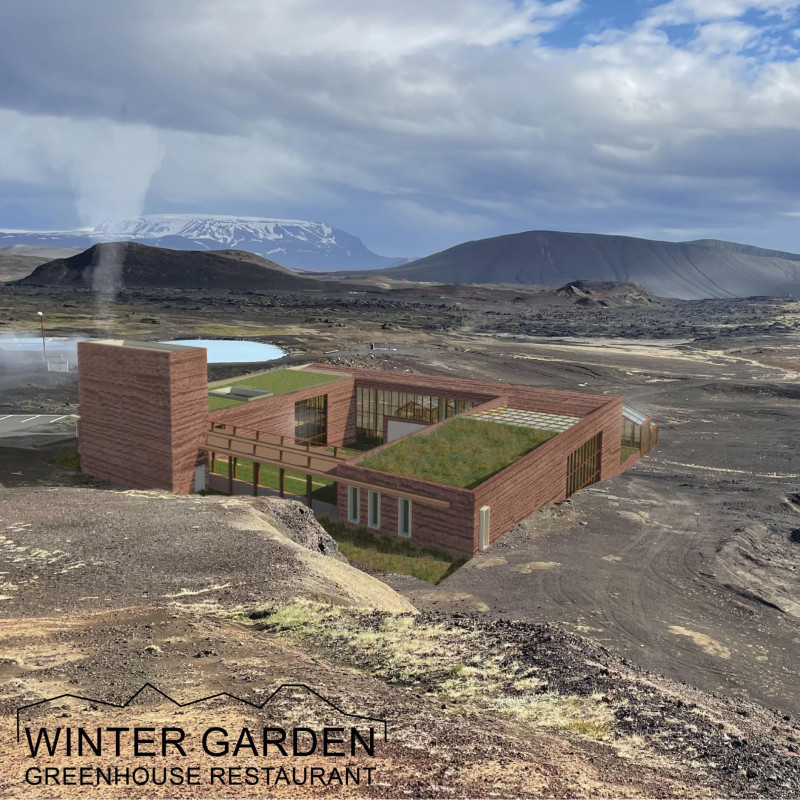5 key facts about this project
Green Magma is an architectural design that integrates deeply with the surrounding geological features. The building takes on a distinctive crater shape that allows natural light to enter the interior. Set against a backdrop of rocky outcrops, the structure serves both agricultural and community functions, emphasizing sustainability and a connection to nature.
Design Concept
The design of Green Magma is informed by the topography of the site. The crater shape reflects the natural forms of the landscape while providing an inviting central space. This design encourages interaction between the structure and its surroundings, drawing attention to the relationship between architecture and the environment.
Material Selection
Dark brick is the primary material used, chosen for its compatibility with the colors of the nearby geological formations. This material contributes not only to the visual cohesion with the landscape but also plays a role in temperature regulation. The building benefits from the thermal mass of the brick, helping it maintain comfortable internal conditions throughout the year.
Functional Organization
The layout of Green Magma is divided into areas for both agricultural production and visitor engagement. The production section includes small greenhouses that maximize sunlight exposure, while an underground area caters to crops that require less light, such as mushrooms. This organization allows for effective farming practices while also enhancing the experience for visitors.
Community and Interaction
Visitor spaces are designed to create connections with the outdoor environment. The southern facade, featuring large openings from the greenhouse, allows ample light to flow into the interior while framing views of the landscape outside. An outdoor theatre acts as a central feature, linking the restaurant and multipurpose spaces, which fosters community engagement and promotes social interaction.
Green Magma incorporates practical sustainability measures. Snowmelt from the greenhouse roof can be collected and stored in an underground tank for irrigation, highlighting the building's focus on ecological responsibility.






















































